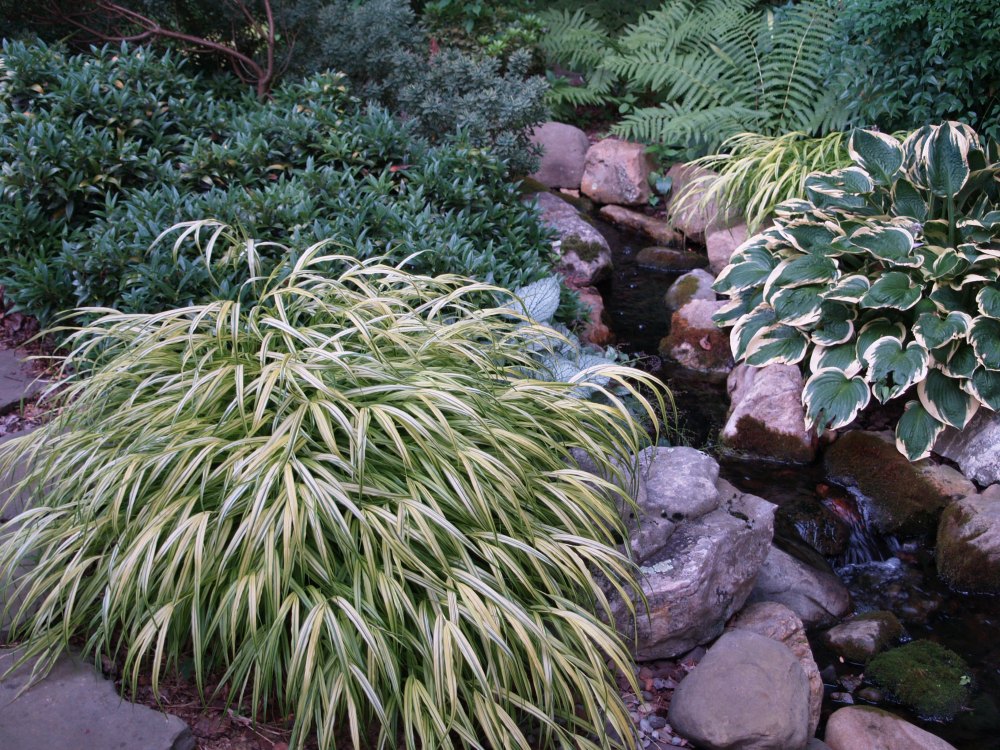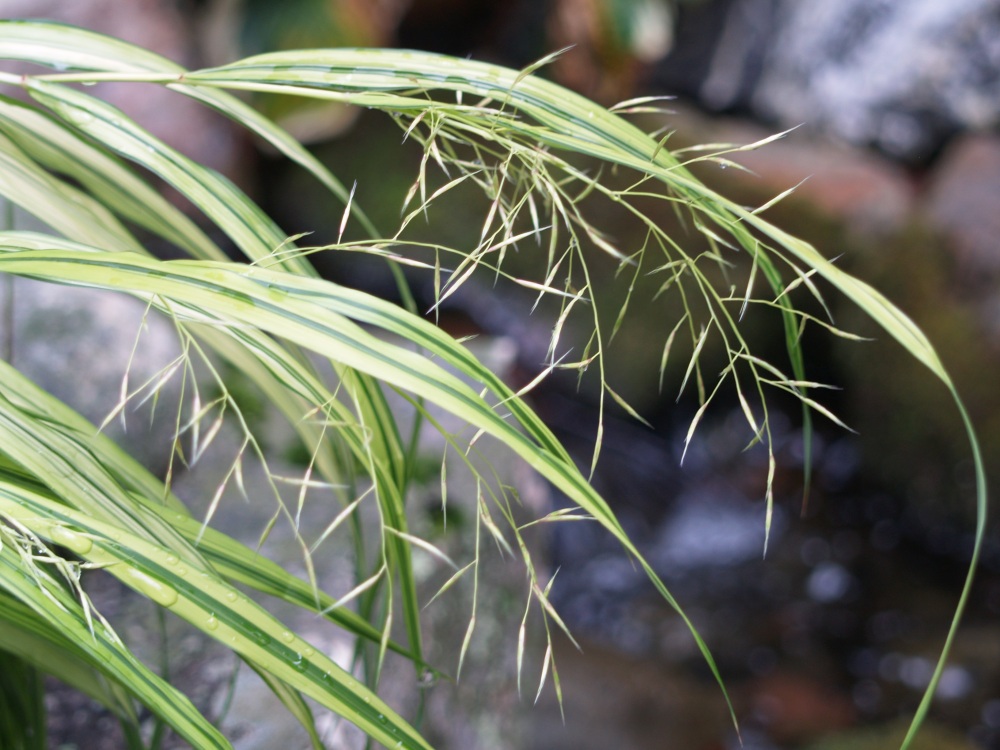I notice that the grassy field that surrounds the nearby farm pond now consists mostly of black pennisetem (Pennisetum alopecuroides ‘Moudry’, below) that has displaced the long standing fescues from the relatively recent past when this property was farmland. For several years I’ve seen ‘Moudry’ encroach to line the edges of this pond, and now this coarse leafed grass has invaded to become a lawn. This is why I chopped it out of my garden long ago, though even with my lax maintenance it never became a problem to this extent. The stiff, black tinged inflorescences are lovely, but it seems that every seed must germinate, and after plucking far too many out of my garden, it’s not surprising that this fountain grass has escaped some other neighborhood garden. 
By comparison, the common Maiden grass (Miscanthus gracillimus) is well behaved, though there are scattered clumps in the part of this meadow that is not mowed regularly. References warn that one grass or another seeds more readily, and the gardener is warned to pay attention to select ones that will stay put. To my thinking, many scare stories of invasive plants are overblown, or a limited to specific soil types or climates, but here’s evidence that this is a plant to avoid. 
When I first began this garden twenty-five years ago I avoided ornamental grasses, though they were just then becoming the rage. Then, I decided that perhaps I was too stubborn and set in my ways, so I gave them a try, with satisfactory but unexciting results. Now, the miscanthus and pennisetems have either succumbed to shade or been yanked out, and the only grasses that remain are Carex varieties and Japanese Forest grass (Hakonechloa macra ‘Aureola’, above and below) that are smaller and colorful, and they stay put. These tolerate the shade, and slowly increase in size without ever seeding where they’re not wanted.
I’m not at all disappointed that other grasses have faded and disappeared, and I go back and forth questioning whether another native grass that tolerates shade, Northern sea oats (Chasmanthium latifolia, below), is worth the trouble. This grass also seeds prolifically, but the seeds seem not to spread more than a few feet from the parent plant. The dozens and hundreds of seedlings are a pain, and for whatever reason my wife has taken a dislike to them, though to my knowledge she has never pulled a single seedling. So far, stubbornness to give in to her is the reason the sea oats are still around.
I toyed with the idea of grasses (up north) but never planted any due to many “those look so messy,” comments from various family members. 😉 Quite frankly I had enough aggravation from the naysayers about a thousand other things and didn’t need grass added to the mix! 🙂
Anyway, now that I’m older and don’t care what anyone says or thinks, I’ve been considering the pink muhly that does so well in Florida. What has been your experience with that, if any?
I have heard no reports that Muhly grass is a rampant seeder. There is no doubt that it is one of the most attractive grasses. I repeatedly see gardeners commenting that grasses they have planted fail to survive the winter, and I suspect that this is primarily from grasses planted in the autumn. Spring planted grasses seem to have little trouble, but newly planted grasses often have trouble with roots rotting. Also, I’ve seen that it is nearly impossible for grasses to survive in pots through the winter because of excess moisture.
Thank you for this info. My biggest fear was that it might take over the yard.